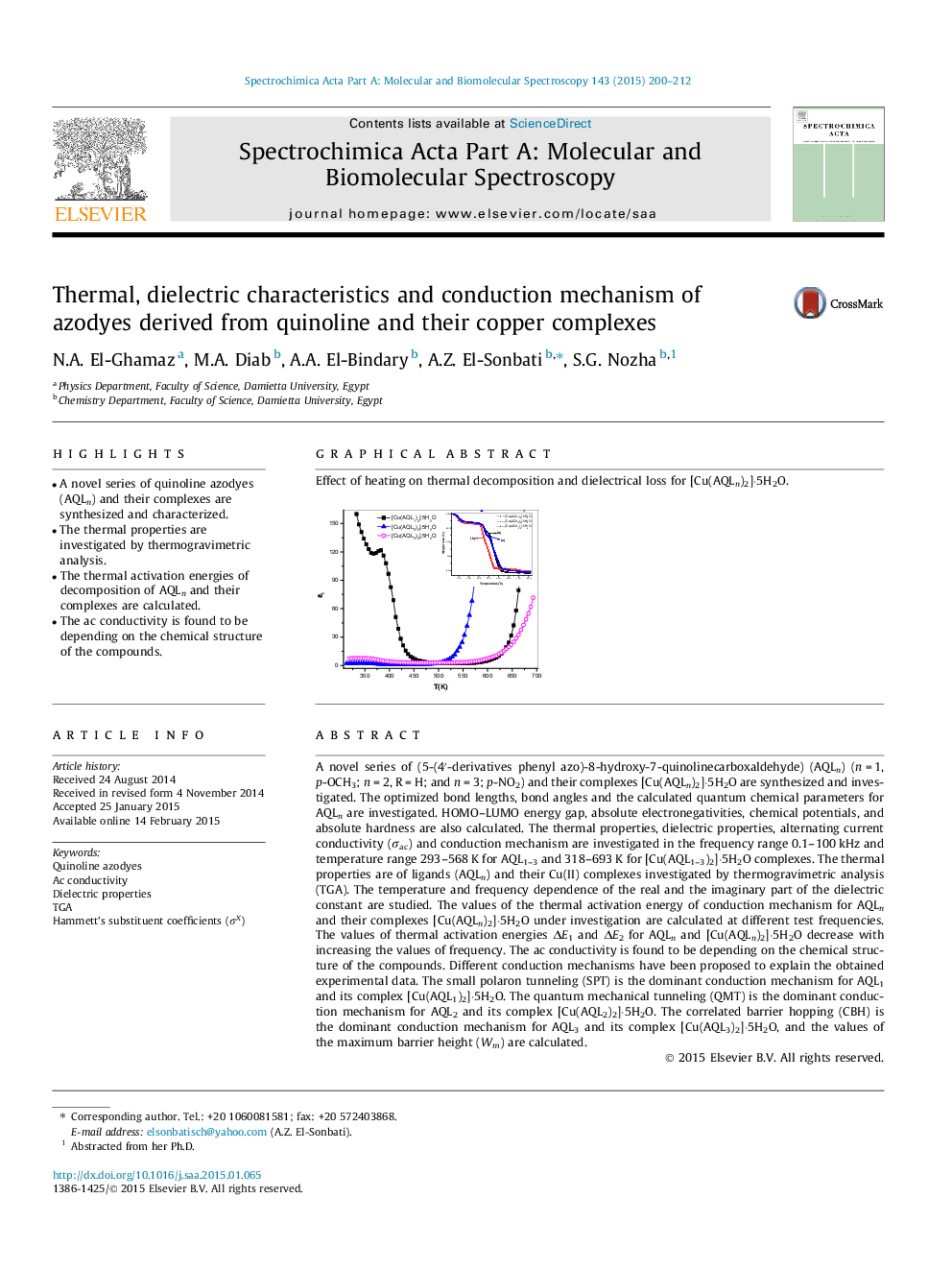| کد مقاله | کد نشریه | سال انتشار | مقاله انگلیسی | نسخه تمام متن |
|---|---|---|---|---|
| 1232217 | 1495226 | 2015 | 13 صفحه PDF | دانلود رایگان |
• A novel series of quinoline azodyes (AQLn) and their complexes are synthesized and characterized.
• The thermal properties are investigated by thermogravimetric analysis.
• The thermal activation energies of decomposition of AQLn and their complexes are calculated.
• The ac conductivity is found to be depending on the chemical structure of the compounds.
A novel series of (5-(4′-derivatives phenyl azo)-8-hydroxy-7-quinolinecarboxaldehyde) (AQLn) (n = 1, p-OCH3; n = 2, R = H; and n = 3; p-NO2) and their complexes [Cu(AQLn)2]·5H2O are synthesized and investigated. The optimized bond lengths, bond angles and the calculated quantum chemical parameters for AQLn are investigated. HOMO–LUMO energy gap, absolute electronegativities, chemical potentials, and absolute hardness are also calculated. The thermal properties, dielectric properties, alternating current conductivity (σac) and conduction mechanism are investigated in the frequency range 0.1–100 kHz and temperature range 293–568 K for AQL1–3 and 318–693 K for [Cu(AQL1–3)2]·5H2O complexes. The thermal properties are of ligands (AQLn) and their Cu(II) complexes investigated by thermogravimetric analysis (TGA). The temperature and frequency dependence of the real and the imaginary part of the dielectric constant are studied. The values of the thermal activation energy of conduction mechanism for AQLn and their complexes [Cu(AQLn)2]·5H2O under investigation are calculated at different test frequencies. The values of thermal activation energies ΔE1 and ΔE2 for AQLn and [Cu(AQLn)2]·5H2O decrease with increasing the values of frequency. The ac conductivity is found to be depending on the chemical structure of the compounds. Different conduction mechanisms have been proposed to explain the obtained experimental data. The small polaron tunneling (SPT) is the dominant conduction mechanism for AQL1 and its complex [Cu(AQL1)2]·5H2O. The quantum mechanical tunneling (QMT) is the dominant conduction mechanism for AQL2 and its complex [Cu(AQL2)2]·5H2O. The correlated barrier hopping (CBH) is the dominant conduction mechanism for AQL3 and its complex [Cu(AQL3)2]·5H2O, and the values of the maximum barrier height (Wm) are calculated.
Effect of heating on thermal decomposition and dielectrical loss for [Cu(AQLn)2]·5H2O.Figure optionsDownload as PowerPoint slide
Journal: Spectrochimica Acta Part A: Molecular and Biomolecular Spectroscopy - Volume 143, 15 May 2015, Pages 200–212
